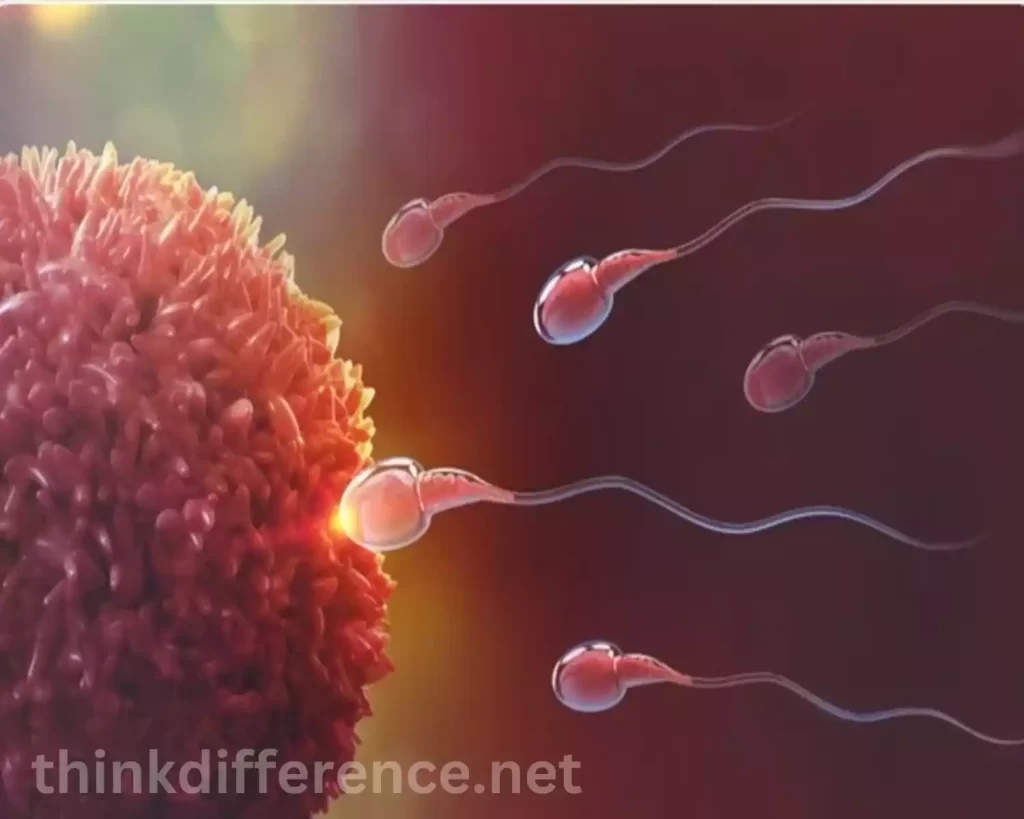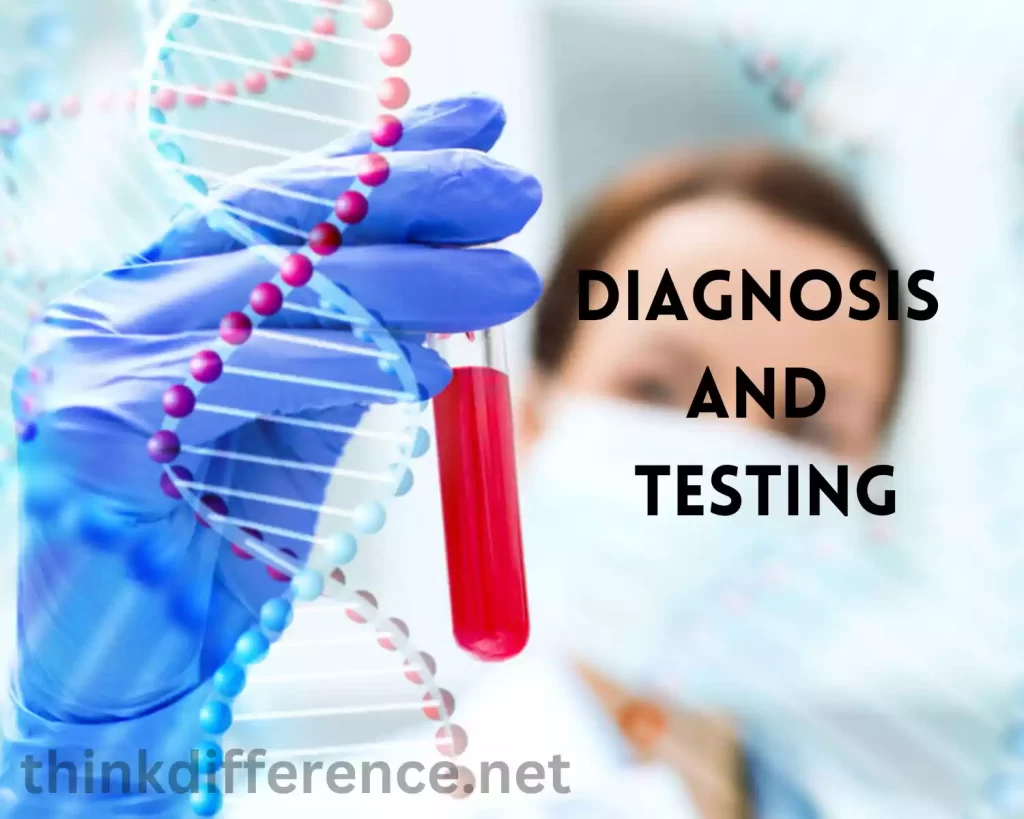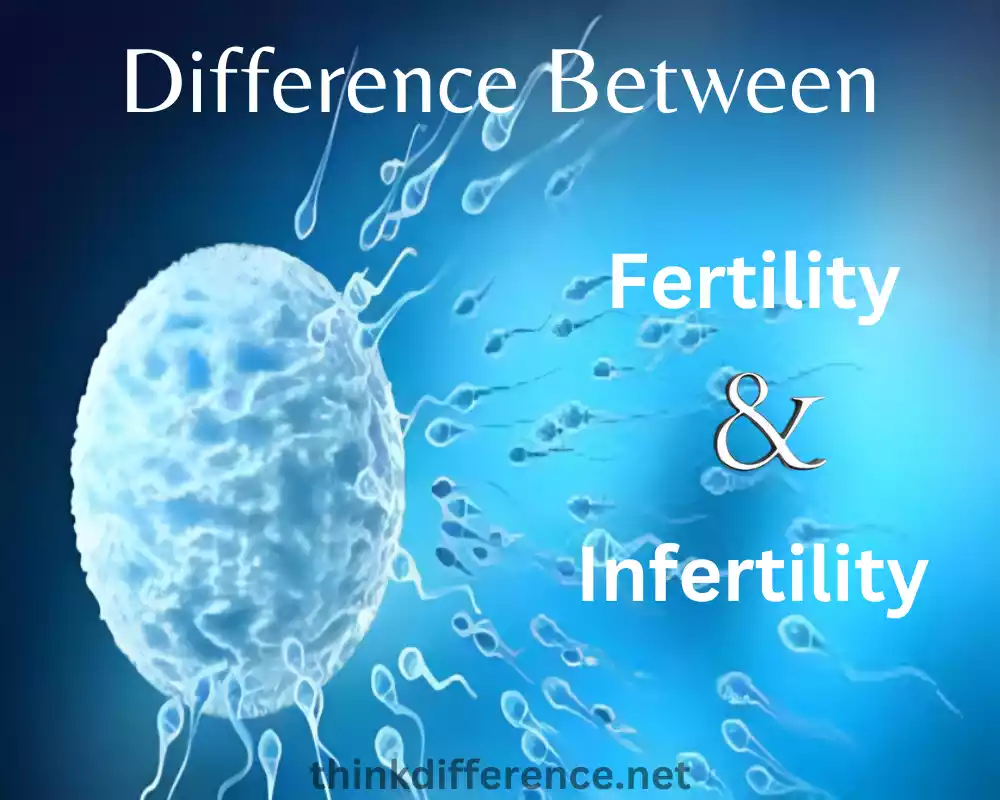Definition of Fertility and Infertility
Fertility refers to one’s capacity for reproduction. Reproducing without difficulty defines fertility. Fertility for women can be determined by her ovulation producing viable eggs and for men by their production and health of sperm.
Infertility refers to an inability to produce children despite regular unprotected sexual contact for at least a year without contraception or protection. It can be due to many different causes including hormonal issues or problems affecting reproductive organs.
Importance of knowing the difference between Fertility and Infertility
Understanding the differences between Infertility and Fertility are vitally important, for several reasons:
- Family Planning: Knowledge of fertility and infertility allows individuals and couples to make informed decisions regarding family planning. Understanding one’s fertility status helps in determining the appropriate time to conceive and the methods that can be employed to achieve pregnancy.
- Early Intervention: Recognizing the signs of infertility can prompt individuals to seek medical assistance at an early stage. Timely intervention increases the chances of successful treatment and conception. Delaying the diagnosis and treatment of infertility may result in reduced treatment options and lower success rates.
- Psychological Well-being: Infertility can have a profound emotional and psychological impact on individuals and couples. Understanding the difference between fertility and infertility helps normalize the experience and reduces the stigma associated with fertility challenges. It enables individuals to seek emotional support, counseling, and join support groups, thereby improving their overall well-being.
- Knowledge of Reproductive Health: Understanding fertility and infertility fosters awareness of one’s reproductive health. It encourages individuals to prioritize their reproductive well-being and seek regular check-ups to identify any underlying issues that may affect fertility. Knowledge gives people the power to take steps that maximize their fertility potential and realize it fully.
- Education and Awareness: By understanding fertility and infertility, individuals can educate themselves and others about the various factors that influence fertility. This knowledge can be shared with friends, family, and the broader community, helping to dispel misconceptions and myths surrounding fertility. Increasing awareness about infertility promotes empathy and support for those experiencing fertility challenges.
- Access to Supportive Resources: Knowing the difference between fertility and infertility allows individuals to access relevant resources and services. This includes fertility clinics, reproductive specialists, support groups, educational materials, and online communities that provide information, guidance, and emotional support throughout the fertility journey.
Understanding the differences between infertility and fertility is critical to making informed decisions, early intervention, emotional wellbeing, reproductive health education awareness campaigns and accessing supportive resources. Individuals and couples that are well informed regarding infertility and fertility can make better choices during their fertility journey and navigate it successfully.
What Is Fertility?
Fertility refers to an individual or couple’s ability to successfully conceive. Fertility refers to our biological ability to reproduce, produce offspring, and reproduce again.

Age, health, reproductive health and hormone balance all play a part in fertility; genetic factors as well as environmental influences also have their share. Fertility for females is closely tied with their menstrual cycles which involve the release of an egg ovulating (ovulation) into uterine tissue for possible implant. Quality and quantity of sperm closely correspond with male fertility.
Fertility alone does not ensure conception. Fertility measures one’s potential to become pregnant; other factors, including timing and egg or sperm quality can impact chances of conception.
Understanding fertility is vitally important to couples and individuals looking to start families or assess their reproductive health, empowering them with information necessary for informed choices, seeking medical help when needed and taking proactive measures that could increase chances of conception.
What is Infertility?
Infertility can be defined as the inability to become pregnant after one year of unprotected, regular sexual activity without protection or contraception. While infertility affects men as much as women, its emotional toll on individuals and couples alike can cause great misery and suffering.

Infertility can be divided into primary (inability to conceive, or carrying an unviable pregnancy to term despite never trying) and secondary categories, the latter of which applies only when having had prior pregnancies have failed to produce results.
Infertility can be caused by numerous factors that impact both men and women alike, but usually affect women more severely than men. Female infertility often stems from problems surrounding ovulation. Abnormalities with either the uterine cervix, endometriosis or hormonal imbalances; while for men this often manifests itself through low sperm counts or motility/mobility issues as well as hormonal issues or structural issues within their reproductive organs.
Infertility is a complex issue caused by numerous factors; sometimes its source remains mysterious despite conducting multiple medical exams and consulting experts. Age also plays a part, as both women and men experience decreasing fertility with age.
Diagnosing infertility involves reviewing medical records, performing physical exams and employing various tests – hormone analysis, imaging studies or genetic screening are often employed – that identify its source. Once treatment options have been identified and explored.
Treatment options for infertility depend on its cause, and may include lifestyle modifications, medication to increase ovulation or surgery; other possible solutions could include assisted reproductive technologies like intrauterine insemination (IVF), donor eggs or embryos or donor sperm donation. Each case of infertility differs and it’s essential that treatment be tailored individually – taking into consideration age and preferences of all involved as well.
If you are having difficulty conceiving, seeking medical assistance should be your top priority. Fertility specialists, reproductive endocrinologists and other healthcare specialists offer expert assessments, guidance and assistance during every stage of infertility journeys.
Understanding Fertility
Understanding fertility is vitally important for couples and individuals who wish to enhance their reproductive health or are planning a family.
Here are five essential points of fertility you should know:
- Definition of Fertility: Fertility refers to the ability to become pregnant and conceive. Fertility occurs when female reproductive system produces healthy eggs while male reproductive systems produce healthy sperm; fertilization by sperm takes place, along with implanting fertilized eggs into uteri as a fertilized egg into ovary or uterine and their subsequent implantation by an egg into its respective place in body.
- Factors Affecting Fertility: Age, overall health and reproductive health conditions, hormonal balances, genetic influences, lifestyle choices and environmental influences all play a part in fertility. It’s essential to realize that fertility results from an intricate interaction among biological, physiological and environmental influences.
- Menstrual Cycle and Fertility: Female menstruation cycles and fertility are inextricably linked. Menstrual periods consist of monthly cycles wherein ovaries produce eggs to implant into uteri for fertilization. Knowledge of your menstrual cycle, tracking ovulation rates and recognizing fertile windows (timeframes when conception may likely take place) will increase chances of pregnancy success and help increase success rate at conception.
- Fertility and Age: Age plays an integral part in determining a woman’s fertility, as they only start off life with limited eggs that continue to diminish as they get older, leading to pregnancy complications or miscarriages more quickly as time progresses. Men too age more gradually but their fertility does indeed decline as time progresses.
- Reproductive Health and Fertility: Maintaining good reproductive health is paramount for fertility success, with regular gynecological visits, screening for sexually transmissible infections (STIs) screenings, treating any potential polycystic ovary syndrome (PCOS) or endometriosis conditions or PCOS as necessary to optimize fertility potential and maximize reproductive potential. Understanding its importance, seeking medical assistance when necessary if any issues are found is also paramount in keeping reproductive systems functioning at an optimum state of wellness – take note!
- Lifestyle Factors: Lifestyle Factors vietii lifestyle factors may have an adverse impact on fertility, including smoking, excessive drinking, drug abuse and obesity. Adopting healthy behaviors such as adopting a balanced diet with regular physical exercise as well as managing stress effectively while limiting exposure to harmful chemicals will all help ensure maximum fertility potential is reached.
- Fertility Awareness and Education: Becoming more knowledgeable about fertility can enable you to make more informed decisions when it comes to making plans for it. Learn about available fertility preservation methods, family planning techniques and support services which may aid your journey towards conception.
Understanding fertility enables individuals and couples to make educated choices, seek medical help when necessary and take proactive measures for optimizing reproductive health. Being informed enables control over one’s own journey towards motherhood while improving reproductive wellbeing.
Causes and Types of Infertility
Infertility can have various causes and can affect both Men and women. Understanding the causes and types of infertility is essential in identifying the underlying factors and seeking appropriate treatment.
Here are the common causes and types of infertility:
1. Female Infertility:
- Ovulation Disorders: Ovulation may be disrupted due to conditions like PCOS, hypothalamic dysfunction or premature ovarian failure (early menopause).
- Fallopian Tube Abnormalities: Blocked or damaged fallopian tubes can prevent the sperm from reaching the egg or hinder the fertilized egg’s journey to the uterus.
- Uterine or Cervical Abnormalities: Substantial structural abnormalities like polyps and fibroids in the uterine environment may prevent successful sperm implantation.
- Endometriosis: Endometriosis, in which tissue that lines the uterus normally, such as endometrium, grows outside it and starts lining other organs instead, can impact fertility through inflammation, scarring and hormonal disruptions that compromise its viability and impair fertility. This disease affects fertility through inflammation, scarring, hormonal fluctuations and imbalance.
2. Male Infertility:
- Sperm Abnormalities: Low sperm counts (oligospermia), decreased motility or abnormal shape (teratospermia) all decrease your odds of fertilizing an egg successfully, decreasing chances of fertilization by as much as 70-90%.
- Hormonal Disorders: Abnormal levels of testosterone or prolactin could negatively influence sperm production and could hinder its formation.
- Testicular Problems: Conditions like varicocele (enlarged veins in the testicles), testicular trauma, or genetic disorders can impair sperm production or function.
3. Unexplained Infertility: In some cases, the cause of infertility cannot be identified through standard testing. Couples may have regular ovulation, normal sperm parameters, and no apparent structural abnormalities, yet still struggle to conceive. Unexplained infertility accounts for a significant portion of infertility cases.
4. Combined Factors: Infertility can also result from a combination of male and female factors. Both partners may contribute to fertility issues, such as when the woman has ovulation problems, and the man has reduced sperm quality.
Infertility can be affected by several different factors, including age, genetic disorders and autoimmune conditions, medications taken for infections or lifestyle choices (smoking excessively or drinking to excess or obesity) along with any medical issues or preexisting medical conditions. A comprehensive evaluation by a healthcare professional specializing in reproductive medicine is crucial to identify the specific causes of infertility in each individual or couple.
Understanding the causes and types of infertility helps individuals and couples gain insights into their reproductive health and guides them in seeking appropriate medical intervention. An accurate diagnosis allows you to create a tailored treatment plan, one which addresses any underlying causes and increases the chances of having a successful pregnancy.
Diagnosis and Testing
Diagnostic and testing processes are vitally important when it comes to pinpointing infertility causes and developing effective treatment plans.

Here are the common diagnostic procedures and tests used in evaluating infertility:
1. Medical History and Physical Examination: Healthcare provider will review your medical history extensively, asking about previous pregnancies, surgeries, menstrual cycles and sexual history. A physical examination may be performed to assess overall health and identify any visible reproductive abnormalities.
2. Hormone Level Testing: Hormones essential to fertility such as estrogen, progesterone and testosterone can be measured with blood tests. These tests help assess ovarian function, ovulation, and hormone imbalances.
3. Imaging Tests:
- Transvaginal Ultrasound: Ultrasound imaging allows for visualization of reproductive organs the uterus and ovaries. It helps detect structural abnormalities, ovarian cysts, or polyps.
- Hysterosalpingography (HSG): It is an X-ray procedure in which a contrast dye is injected into the uterus through the cervix. This helps evaluate the shape and structure of the uterine cavity and determines if the fallopian tubes are open.
4. Genetic Testing: Genetic testing may be recommended in certain instances to detect genetic abnormalities, chromosomal disorders or any other factors which could exacerbate infertility and further threaten fertility. This includes tests such as karyotyping, cystic fibrosis carrier screening, or testing for specific genetic mutations.
5. Diagnostic Procedures:
- Ovulation Assessment: Various methods can be used to assess ovulation, such as tracking basal body temperature, monitoring cervical mucus changes, or using ovulation predictor kits.
- Semen Analysis: This test evaluates the quantity, quality, and motility of sperm. It helps assess male fertility and determines if any abnormalities are present.
- Hysteroscopy/Laparoscopy: Minimally-invasive procedures involve inserting a thin lighted instrument (laparoscopy) to evaluate and visualize reproductive organs, detect structural abnormalities or remove potential adhesions or blockages, as well as identify structural anomalies or adhesions or blockages that might exist in those organs.
6. Additional Tests: Depending on the circumstances, other tests may also be suggested, including testing for sexually transmissible infections (STIs), testing anti-Mullerian hormone reserves through AMH testing or performing endometrial biopsy to evaluate uterine lining quality.
Consult a fertility specialist in order to select appropriate diagnostic tests for each individual and couple, in order to ascertain causes of infertility, as well as develop personalized plans to increase chances of conception.
Treatment Options for Infertility
Infertility may be treated in various ways depending on its source and individual circumstances. Here are some common treatment options for Infertility:
1. Medications to Stimulate Ovulation: Women experiencing difficulty with ovulation may require medications like Clomiphene and Letrozole in order to regulate their menstrual cycles and facilitate egg production. Gonadotropins, which are injectable hormones, may also be used for more complex cases.
2. Surgical Interventions: Some structural abnormalities that cause infertility can be corrected through surgical procedures. For example, laparoscopic surgery can be used to remove cysts, fibroids, or scar tissue affecting fertility. In cases of blocked fallopian tubes, tubal surgery or minimally invasive procedures like tubal cannulation can be performed to restore fertility.
3. Assisted Reproductive Technologies (ART):
- Intrauterine Insemination (IUI): This procedure involves the introduction of washed and concentrated sperm directly into the uterus during the woman’s fertile period. IUI is commonly used when there are mild male factor infertility, cervical issues, or unexplained infertility.
- In Vitro Fertilization (IVF): IVF is a widely used ART procedure. Procedure involves stimulating ovaries to produce multiple eggs that will then be extracted, fertilized by sperm, and placed back in the uterus for transference into it. IVF can be performed with the woman’s own eggs and sperm or can involve the use of donor eggs, sperm, or embryos.
- Intracytoplasmic Sperm Injection (ICSI): ICSI (in vitro sperm injection) is an innovative form of in vitro fertilizations (IVF). One or more single sperm are directly injected into an egg to facilitate fertilization. ICSI is often used in cases of severe male factor infertility or when previous attempts at IVF have been unsuccessful.
4. Donated eggs, sperm or embryos: When there are quality issues with egg or sperm production or genetic considerations become an issue, donor eggs, sperm or embryos could provide an option to address both issues simultaneously. This allows individuals or couples to achieve pregnancy using the donated gametes or embryos.
5. Adoption and Surrogacy: Adoption and surrogacy provide alternatives for individuals or couples unable to conceive naturally or carrying pregnancies to term. Adoption involves legally adopting a child, while surrogacy involves another woman carrying and giving birth to a child on behalf of the intended parents.
Treatment choices depend upon various factors such as diagnosis, duration and age of infertility as well as personal preferences, ethical/cultural concerns or overall health of an individual patient. It is advisable to meet with a fertility specialist in order to create a treatment plan and determine effective options.
Counselors, support groups or fertility-specific therapists provide invaluable emotional and practical assistance during treatments for infertility.
Emotional and Psychological Impact
Infertility can have a tremendously damaging impact on both individuals and couples alike, creating emotional turmoil throughout their journey to conception. Acknowledging and managing emotional/psychological aspects related to infertility are integral parts of overall wellbeing.
Here are some key points regarding the emotional and psychological impact of infertility:
- Stress and Anxiety: Infertility often leads to increased levels of stress and anxiety. The pressure to conceive, uncertainty about the future, financial burdens, and the emotional roller coaster of treatment can contribute to heightened stress levels. It’s important to develop coping mechanisms and seek support to manage stress effectively.
- Grief and Loss: Infertility can bring feelings of grief and loss as individuals and couples mourn the loss of the biological child they had hoped for. Experiencing monthly disappointments, failed treatments, or pregnancy losses can further compound these feelings. Recognizing and processing these emotions is crucial to facilitate healing and emotional well-being.
- Relationship Challenges: Infertility can strain relationships, as couples may face disagreements, resentment, or feelings of blame. The pressure and emotional intensity of fertility treatments can impact communication, intimacy, and relationship dynamics. Open and honest communication, seeking couples therapy, or joining support groups can help navigate these challenges and strengthen the relationship.
- Social Isolation and Stigma: Infertility is often a private and sensitive matter, leading individuals and couples to withdraw from social activities or isolate themselves. Feelings of inadequacy, shame, or the fear of judgment can contribute to this isolation. Connecting with others who understand the infertility journey, whether through support groups or online communities, can provide a sense of belonging and support.
- Impact on Self-Esteem and Identity: Infertility has the ability to deeply impact women’s self-esteem and identity. Women may feel inadequate due to cultural expectations surrounding motherhood. Consequently they may perceive motherhood as something which should come easily for them. It’s important to separate self-worth from fertility outcomes and engage in activities that foster self-care and self-compassion.
- Decision-Making Challenges: Infertility treatment often involves complex decisions, such as choosing specific treatment options, considering third-party reproduction, or deciding to pursue alternative paths to parenthood. These decisions can be emotionally challenging and require careful consideration. Seeking guidance from healthcare providers, fertility counselors, or trusted advisors can facilitate the decision-making process.
- Seeking Emotional Support: It is crucial to seek emotional support throughout the infertility journey. Reaching out for support can take various forms: family and friends can provide comforting words while professional counseling offers expertise. Support groups offer another source of comfort. They allow members to exchange experiences, gain advice from other users who have experienced similar struggles, as well as obtain empathy from peers with similar problems.
- Self-Care and Emotional Well-being: Maintaining emotional wellbeing while experiencing infertility requires prioritizing self-care. Engaging in activities that bring joy, practicing stress-reducing techniques such as mindfulness or meditation, and seeking outlets for emotional expression can help manage the emotional impact of infertility.
Keep in mind that every experience with infertility varies and that coping methods might change according to individual. Seeking professional help, leaning on support networks, and maintaining open communication with loved ones can provide valuable support and help navigate the emotional and psychological challenges associated with infertility.
Comparison table of Fertility and Infertility
| Aspect | Fertility | Infertility |
|---|---|---|
| Definition | The ability to conceive and achieve a successful pregnancy | The inability to conceive after a year of regular, unprotected intercourse |
| Focus | Reproductive health and capability to conceive | Identification and treatment of underlying issues hindering conception |
| Causes | Various factors, including age, health, and reproductive function | Medical conditions, hormonal imbalances, structural abnormalities, genetic factors, etc. |
| Diagnosis | Generally not diagnosed unless there are specific concerns | Medical evaluation, diagnostic tests, and identification of causes |
| Treatment | May not require specific treatment, focuses on healthy lifestyle choices | Depends on the underlying cause and may include medication, surgery, or assisted reproductive technologies |
| Emotional Impact | May bring joy and fulfillment when successful | Can be emotionally distressing, causing frustration, sadness, and stress |
| Duration | Can be ongoing throughout the reproductive years | Can be temporary or chronic, depending on the cause and treatment |
| Potential Outcome | Ability to conceive and achieve a healthy pregnancy | Achievement of pregnancy with appropriate treatment or alternative family-building options |
| Importance | Key for family planning and reproductive health awareness | Requires understanding and seeking appropriate medical assistance for conception |
Conclusion
Fertility and Infertility are complex issues that affect millions of individuals worldwide. Understanding the various factors that influence fertility, the causes of infertility, and the available treatment options is crucial for those facing difficulties in conceiving. Seeking professional guidance and emotional support can help individuals navigate this challenging journey and find hope in the face of fertility challenges.



